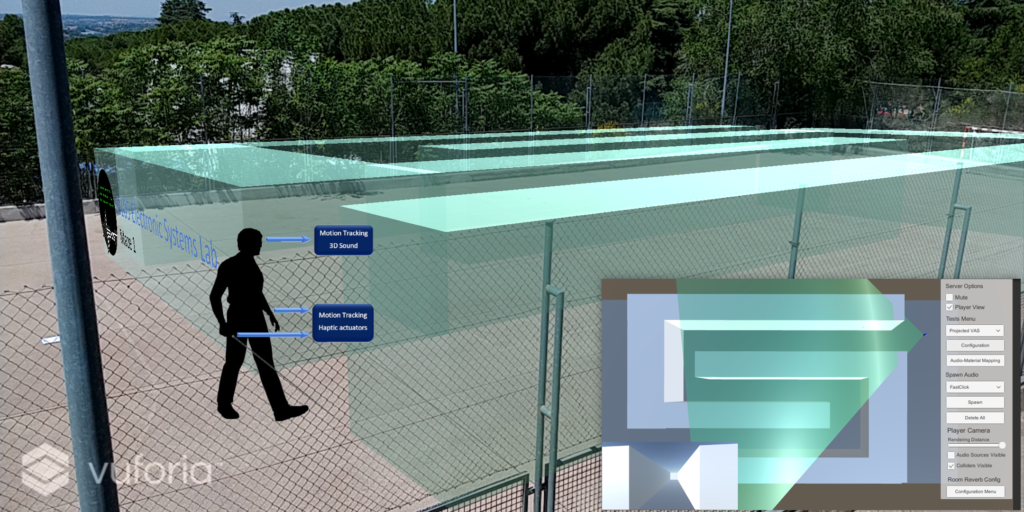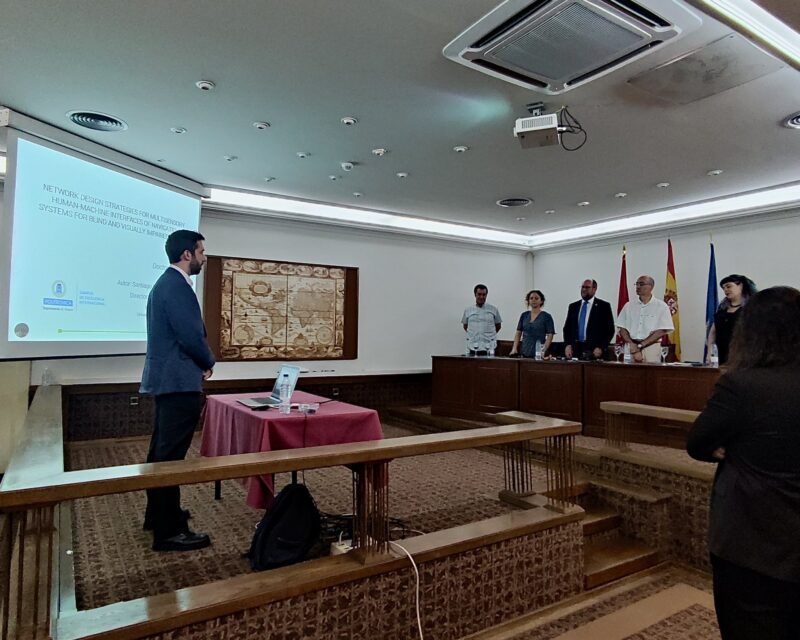On July 13th, our colleague and lab member Santiago Real Valdés defended his PhD Thesis entitled “Network Design Strategies for Multisensory Human-Machine Interfaces of Navigation Systems for Blind and Visually Impaired People”. This work was carried out at B105 Electronic Systems Lab under the direction of Professor Alvaro Araujo.
The thesis defense took place at the ETSI Telecomunicación in Madrid. The work was evaluated positively earning the highest possible grade, along with the “cum laude” mention.
Overall, the research pursued design guidelines, tools, and methods for the development of networked navigation assistance systems for blind and visually impaired (BVI) individuals. Specifically, it resulted in the following contributions to the scientific community:
- Study of the state-of-art at navigation assistance for BVI individuals. This was undertaken to re-evaluate the perspective of navigation systems for the blind and visually impaired (BVI) in a new technological-enabling context, attempting to integrate key elements of what is frequently a disaggregated multidisciplinary background.
- Development of the Virtually Enhanced Senses (VES) System. VES is a wireless, mixed-reality platform developed to design, emulate, implement, and test complete navigation systems.
- Development of novel Sensory Substitution Devices (SSD) and methodologies to assess navigation assistance in mixed reality environments. Novel and representative SSD were implemented building on previous solutions, design guidelines and recommendations. Thereafter, new methodologies and performance markers were developed to quantify the performance of the SSD under various network architectures and operation conditions.
- Novel relations between Quality-of-Experience (QoE) and Quality-of-Service (QoS) in navigation assistance for BVI individuals were found. Overall, a tradeoff was observed between the user’s spatial data acquisition and sensorimotor coupling degradation due to motion-to-photon delay.



Further information on the open-access VES system can be found at the following link. Also, the latest results were disseminated through the media:

